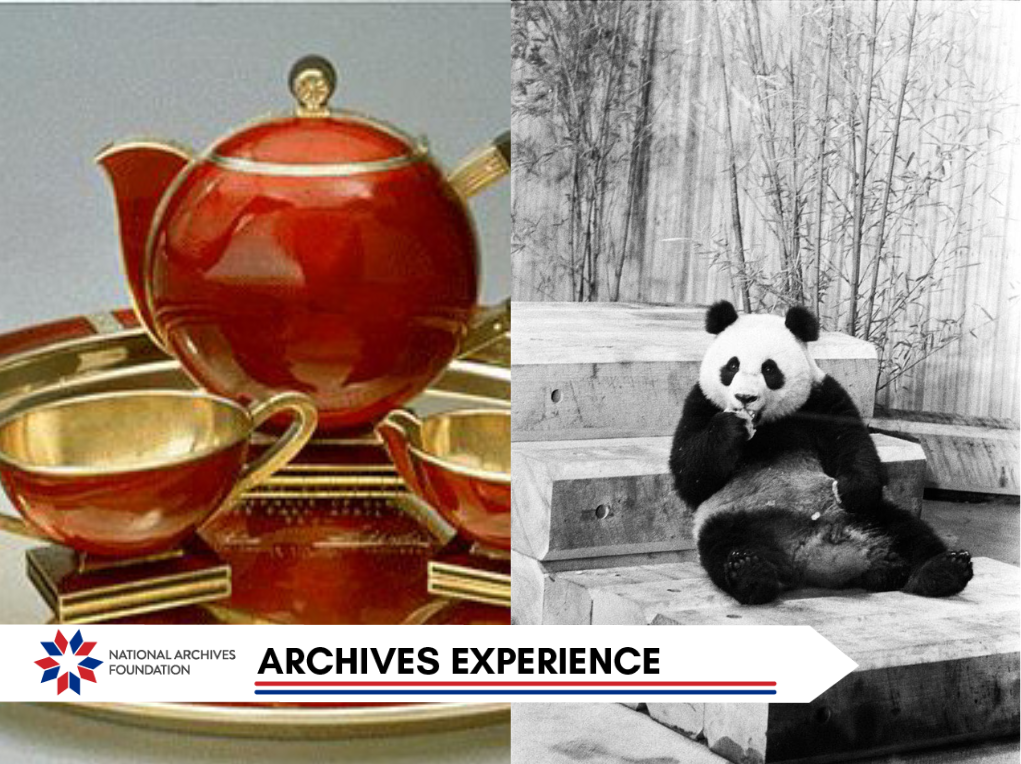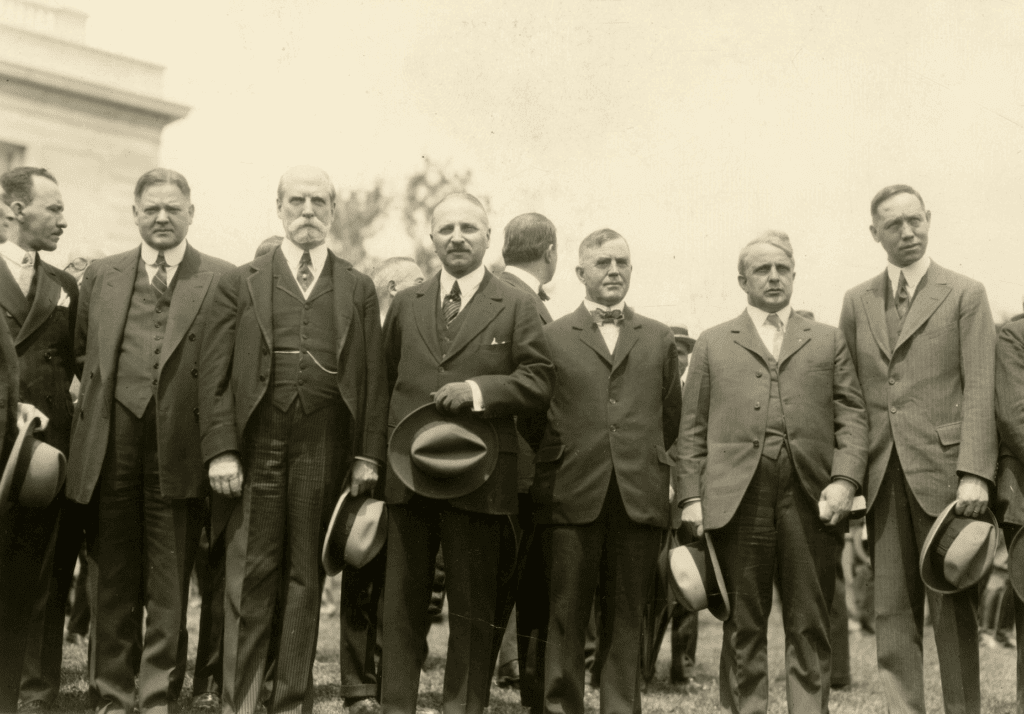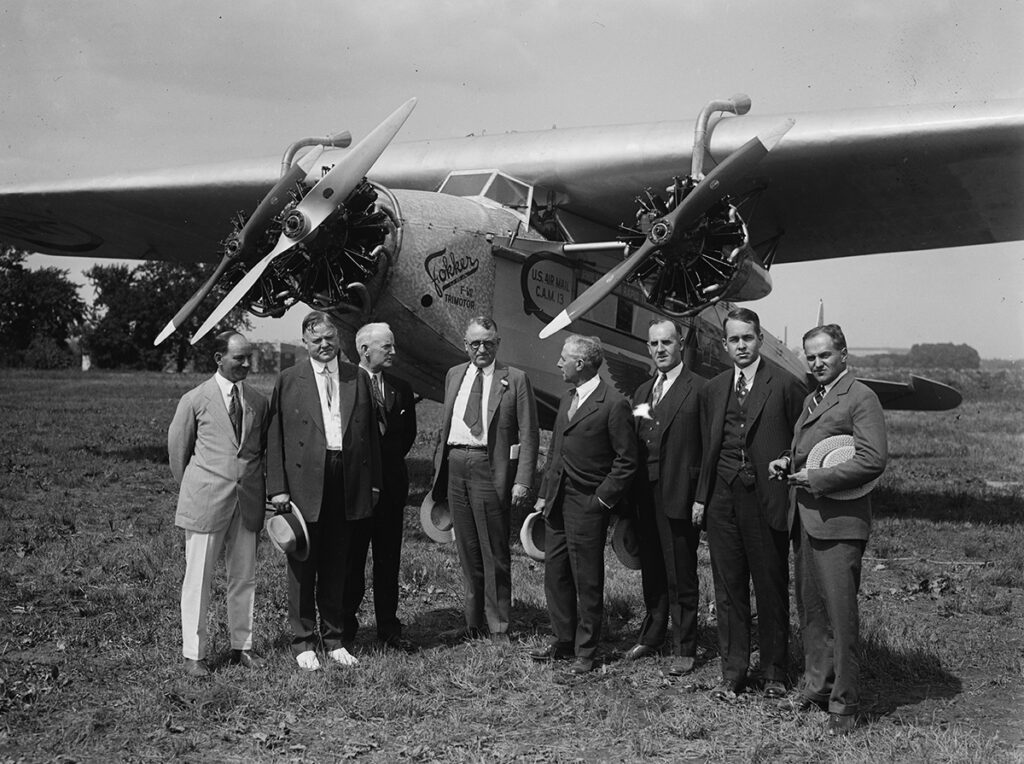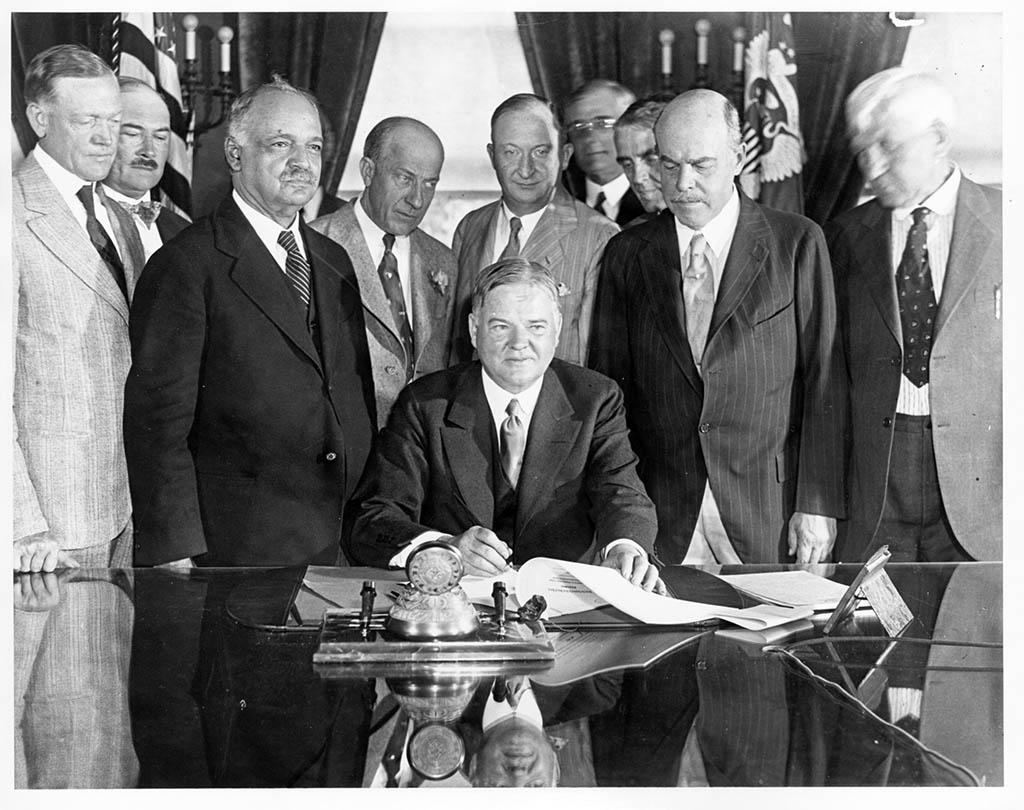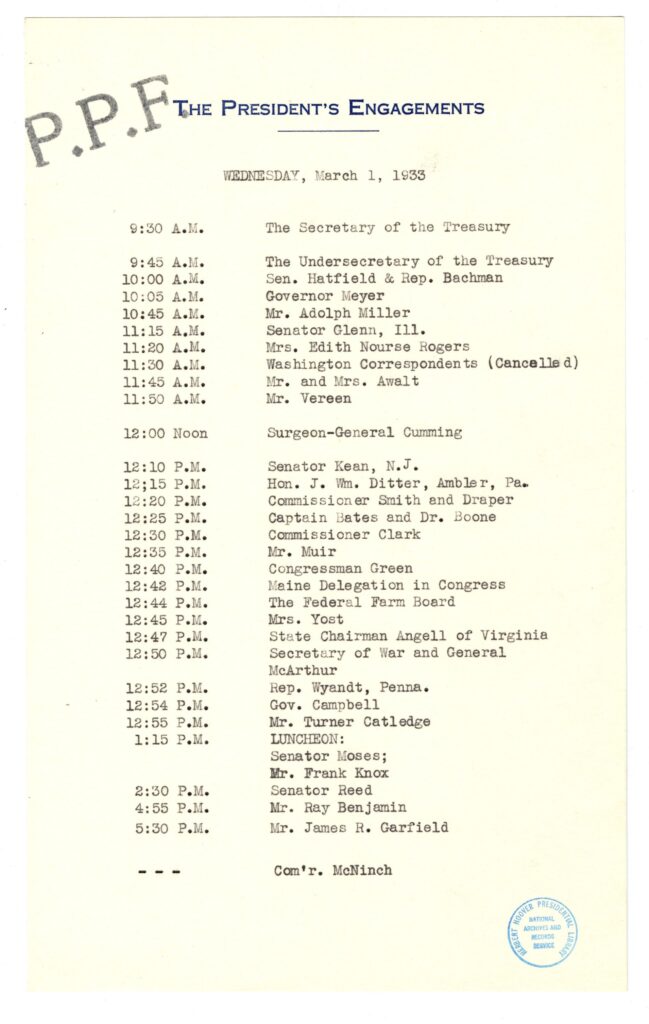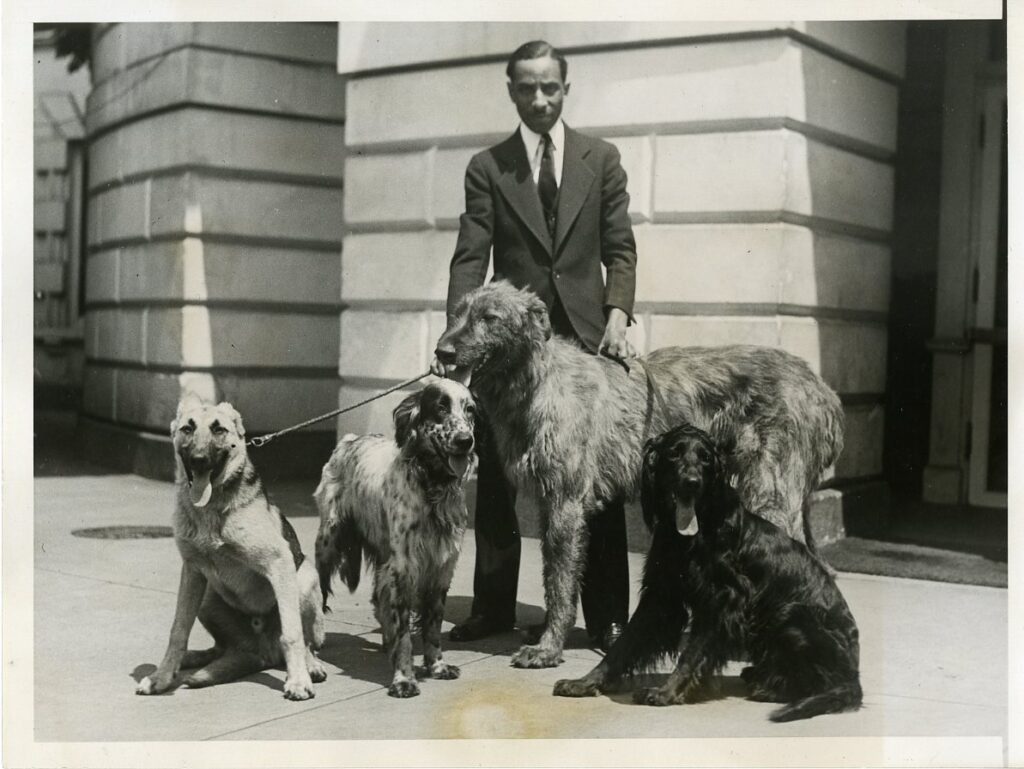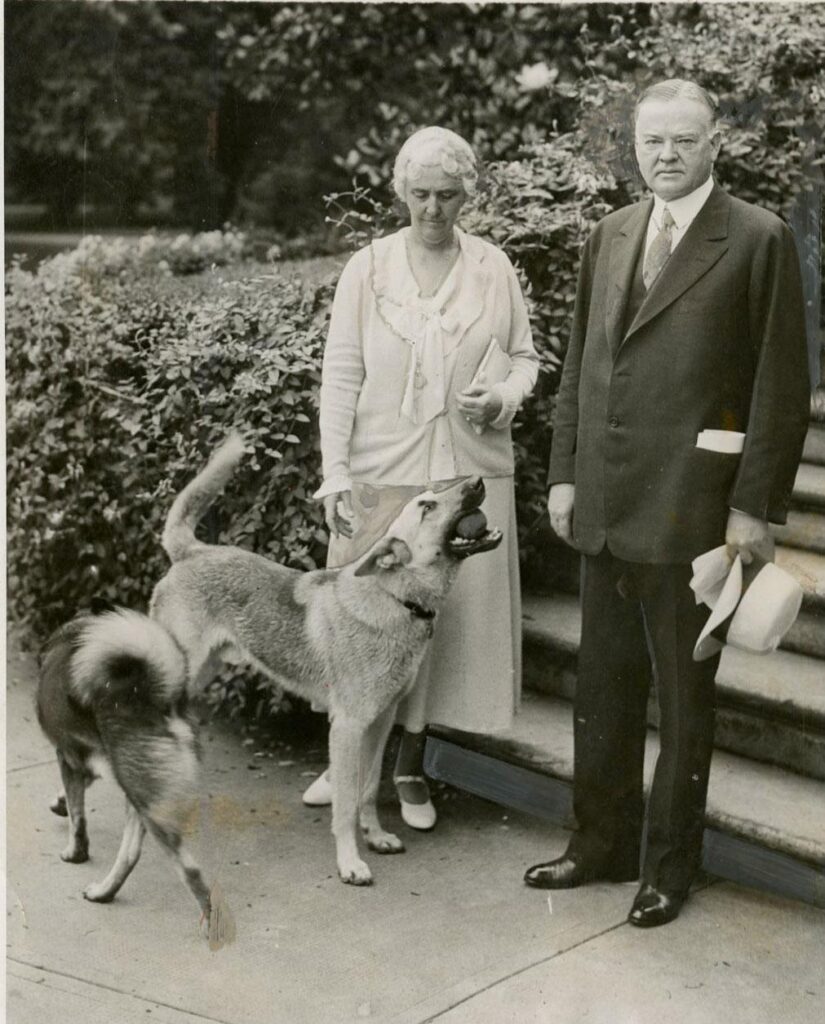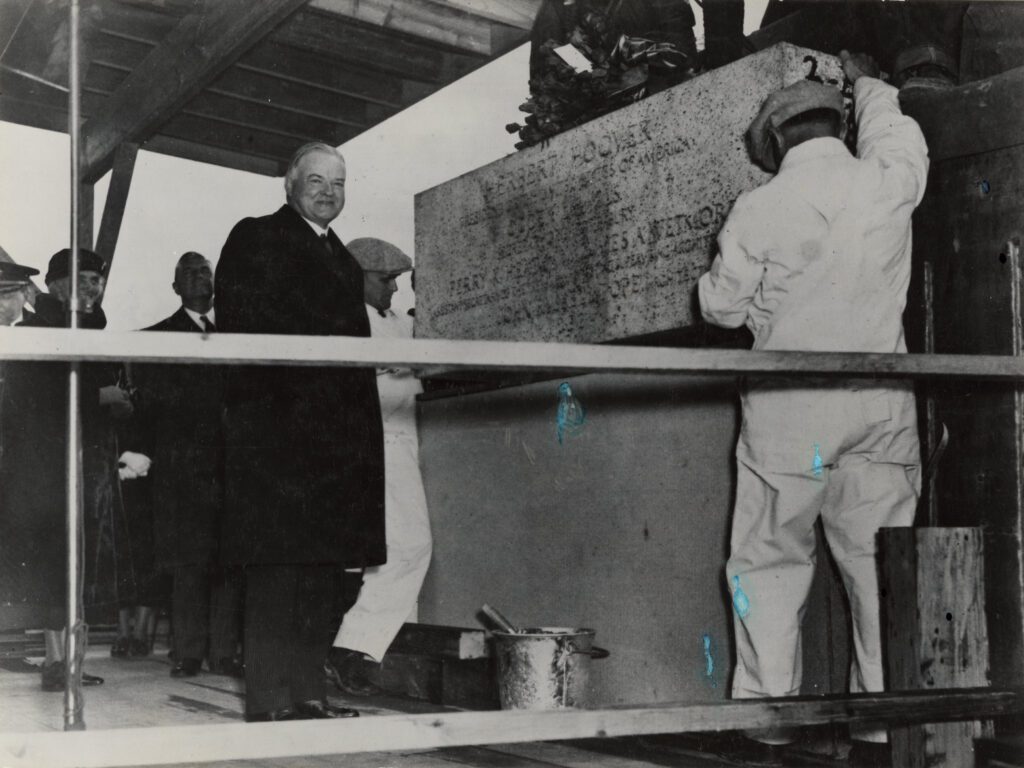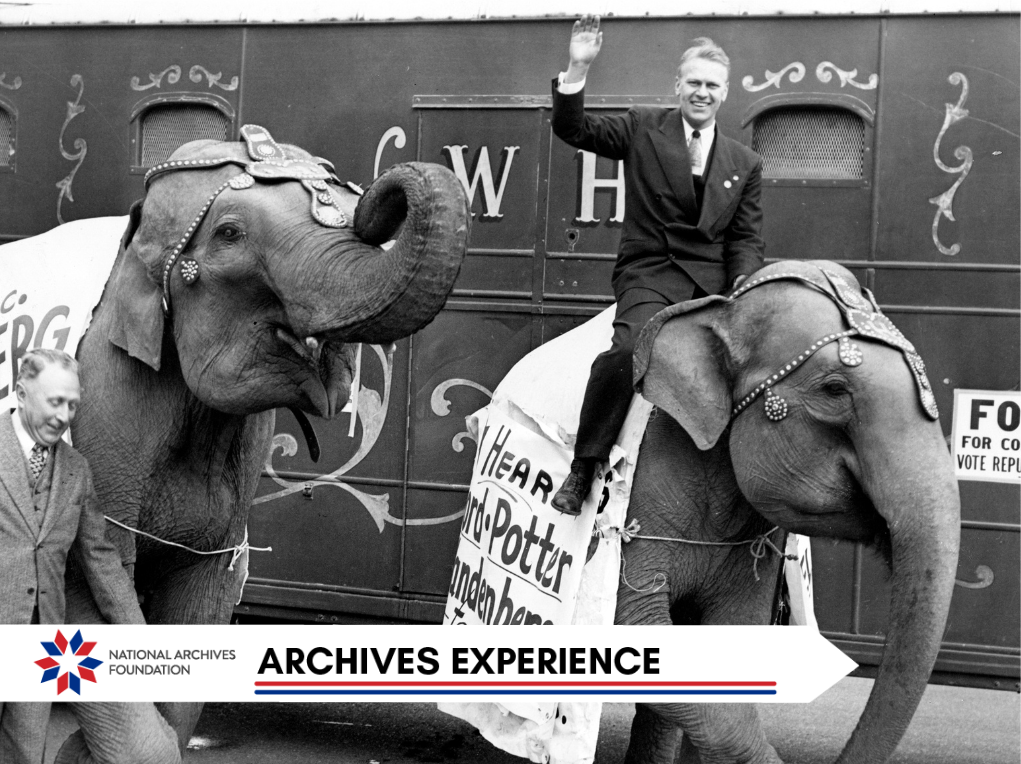Relief and Reform: Spotlight on Herbert Hoover
President Herbert Hoover’s birthday on August 10 offers us a chance to explore his presidency beyond the economic crisis that defined his time in office. Hoover was far more than a symbol of hard times. An engineer, humanitarian, and reform-minded leader, he helped shape key institutions and policies that still define American governance (including our organization’s namesake, the National Archives) From his relief efforts to championing the construction of the building that is home to the Declaration of Independence, let’s explore Hoover’s contributions to public service.
President Herbert Hoover delivering his inaugural address, 1929 (31-1929-62)
President Hoover at the first game of the season between the Boston Red Sox and the Washington Senators, 1930 (31-1930-21)
From Iowa to D.C.
Herbert Hoover spent his early childhood in Iowa (where you can visit his Presidential Library, which is reopening to the public in summer 2026) before moving in with relatives in Oregon at the age of 11 after his mother became ill with pneumonia. Hoover began his formal schooling at the newly opened Stanford University, where he studied engineering. After graduating in 1895, Hoover built a successful career as a mining engineer. When World War I broke out, he organized relief efforts for Americans abroad and earned recognition from President Woodrow Wilson. Hoover was then tapped to lead the U.S. Food Administration, boosting agricultural production and encouraging voluntary conservation to support the war effort.

The Hoover family boards the S.S. Ryndam en route to the United States, 1917 (31-1917-02)
Commerce Days
Before becoming President, Herbert Hoover served as Secretary of Commerce under Presidents Harding and Coolidge from 1921 to 1928, an unusual but not unprecedented path for a future Commander-in-Chief. In fact, Hoover was the last sitting President to have held a Cabinet-level position rather than the Vice Presidency before taking office.
Group of cabinet secretaries (Hoover standing second from the left) and others at memorial tree planting, Washington, D.C., 1924 (NAID: 169142666)
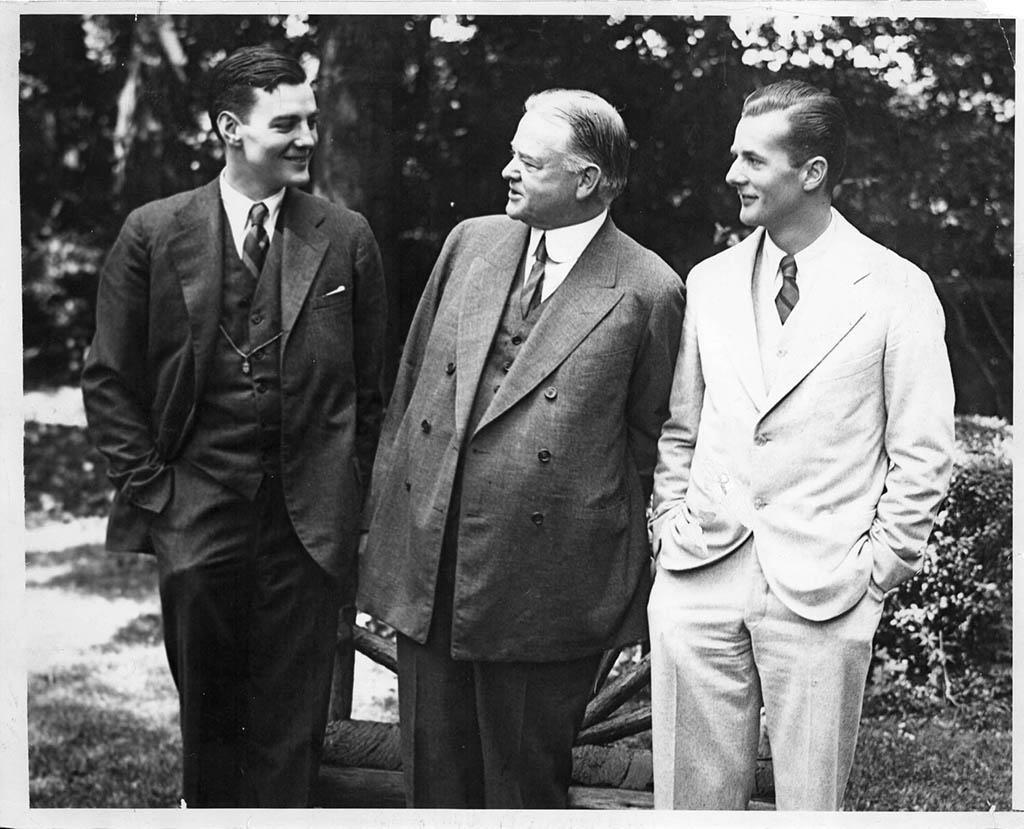
Secretary of Commerce Herbert Hoover with sons Herbert, Jr., and Allan at their home in Washington, D.C., 1928 (31-1928-18)
In this role, Hoover transformed the modest department into a hub of innovation, championing standardization, efficiency, and cooperation between government and industry. One notable contribution was in the nascent field of commercial aviation, where Hoover helped establish more formal standards and rules. Under the new Aeronautics Branch, the number of lighted runways tripled during his tenure, and he also oversaw an increased use of mail planes. Hoover promoted streamlined regulations for radios and laboratories, helping to shape America’s emerging modern economy.
Secretary Hoover with a U.S. Air Mail plane (U.S. Department of Commerce)
On Pennsylvania Avenue
Hoover ran for President and won in 1928, and the Presidency was his first and only elected office. His campaign was run chiefly on the promises of social, economic, and environmental reforms. Disaster struck almost immediately into his term when the stock market crashed in 1929. Much of his administration's efforts soon turned to addressing the economic crisis brought on by the Great Depression. Some of these efforts included loan programs like the Farm Relief Bill and public works projects such as construction of Hoover Dam.
President Hoover signs the Farm Relief Bill, 1929 (31-1929-01)
Several other measures Hoover signed into law were aimed at economic stimulation.The Davis-Bacon Act, for example, established wage standards for construction workers on federal projects. He also established the Reconstruction Finance Corporation, a government agency that provided loans to banks, railroads, and other key businesses. In the agricultural sector, he created the Federal Farm Board to help farmers deal with falling prices by allowing the government to buy and hold surplus crops.
President Hoover’s daily schedule showing a brief meeting with Federal Farm Board members in March 1933 (NAID: 526938346)
Other Residents of the Hoover White House
The Hoovers owned many dogs who accompanied the family in their travels around the country during his term. His best-known dog was King Tut, a Belgian police dog who was prominently featured in his presidential campaign materials. Although King Tut only resided at the White House briefly, the Herbert Hoover Presidential Library notes that the photo below is often one of their most requested artifacts.
Herbert Hoover and King Tut, 1928 (Herbert Hoover Presidential Library)
President and Mrs. Lou Hoover in the White House gardens with Pat (holding the ball) and Weegie, 1932 (31-1932-53)
The immense economic turmoil of the times, especially the high unemployment rate, took a toll on the nation, and Hoover’s policies were largely unpopular, leading to his eventual defeat by President Franklin D. Roosevelt in the presidential election of 1932.
Herbert Hoover’s impact as President extends beyond the economic upheaval that came to define his time in office. His earlier career as a humanitarian and Commerce Secretary influenced American governance, particularly in areas like industrial standardization and even aviation.
A lasting piece of his legacy is the National Archives Building, the cornerstone of which Hoover laid on February 20, 1933. Calling it “a temple to our history," Hoover helped set in motion a project that continues to preserve the nation’s records.
President Herbert Hoover at the ceremonial the laying of the cornerstone of the National Archives Building, 1933 (NAID: 12168464)
Related Content
